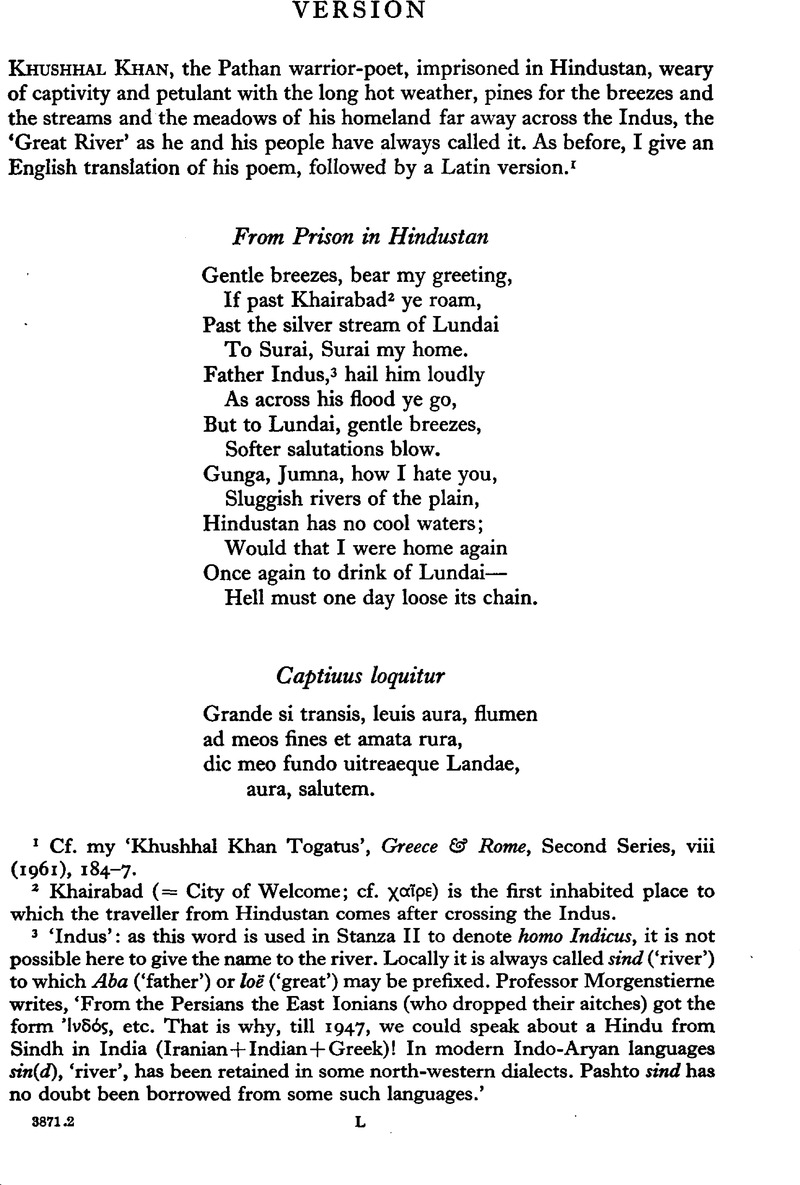No CrossRef data available.
Article contents
Abstract

- Type
- Miscellaneous
- Information
- Copyright
- Copyright © The Classical Association 1963
References
1 Cf. my ‘Khushhal Khan Togatus’, Greece & Rome, Second Series, viii (1961), 184–7.Google Scholar
2 Khairabad (= City of Welcome; cf. χαῖρε) is the first inhabited place to which the traveller from Hindustan comes after crossing the Indus.
3 ‘Indus’: as this word is used in Stanza II to denote homo Indicus, it is not possible here to give the name to the river. Locally it is always called sind (‘river’) to which Aba (‘father’) or loë (‘great’) may be prefixed. Professor Morgenstierne writes, ‘From the Persians the East lonians (who dropped their aitches) got the form ‘ινδός, etc. That is why, till 1947, we could speak about a Hindu from Sindh in India (Iranian + Indian + Greek)! In modern Indo-Aryan languages sin(d), ‘river’, has been retained in some north-western dialects. Pashto sind has no doubt been borrowed from some such languages.’




